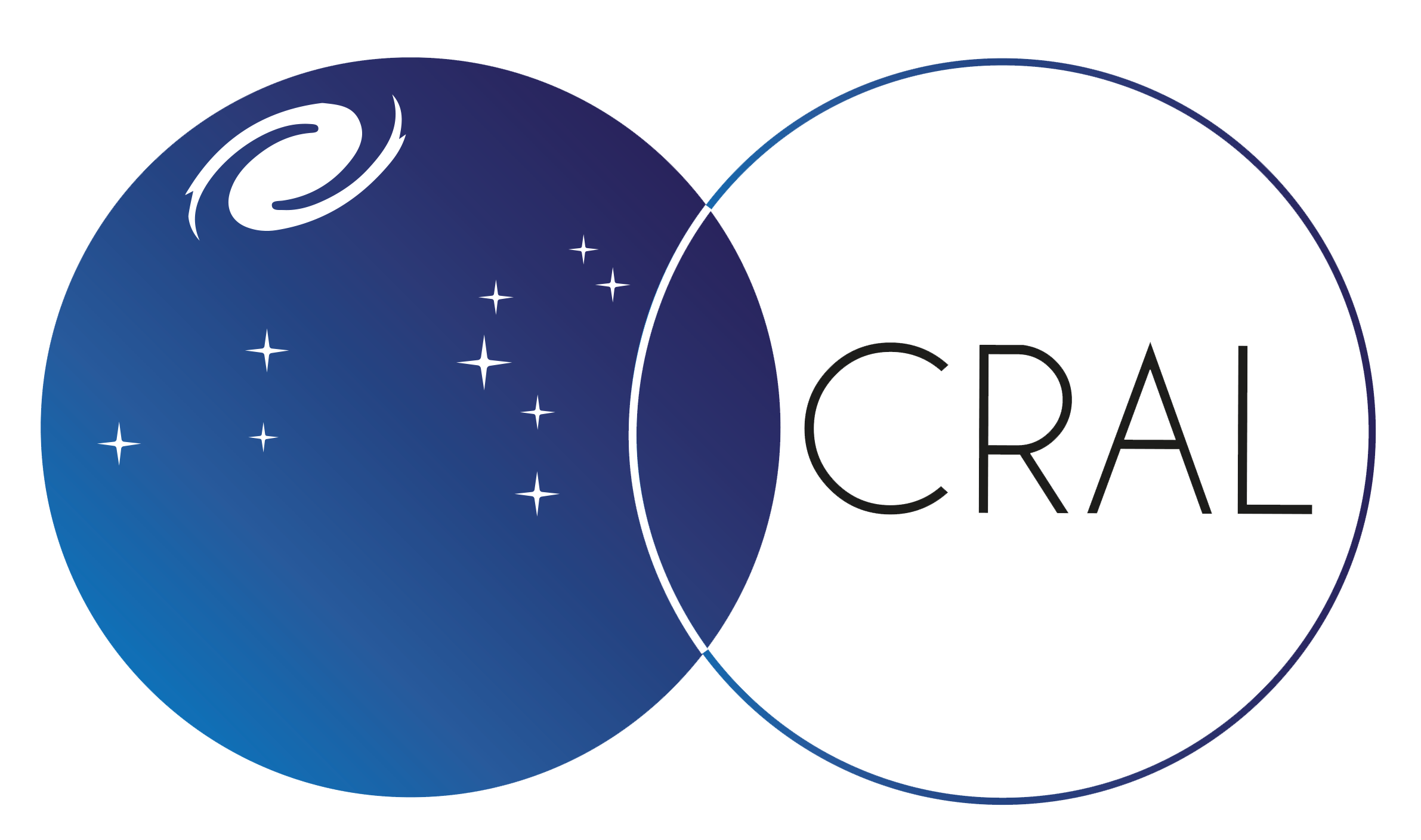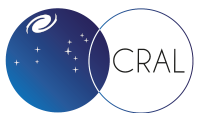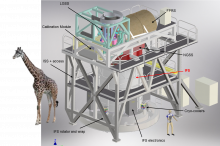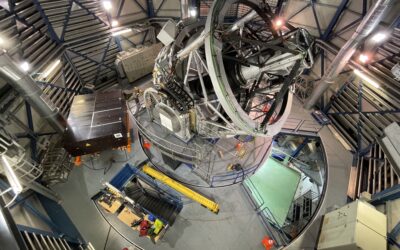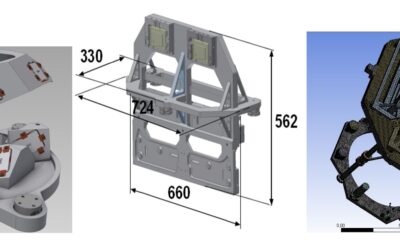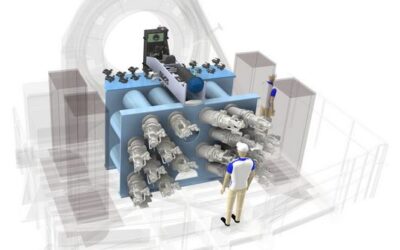POLE INSTRUMENTATION

Mécanique
- Didier BOUDON
- Éric DAGUISÉ
- Jean-Emmanuel MIGNIAU
- Victor MAUGER-VAUGLIN (CDD)
Optique
- Alexandre JEANNEAU
- Florence LAURENT, responsable du Pôle Instrumentation
- Magali LOUPIAS
Electronique
- Aurélien JARNO
Pilotage de projets
- Rémi GIROUD
- Gil MORETTO
- Flora PAGANELLI (CDD)
- Alban REMILLIEUX
Axes d’activités
Développement d’instruments
Le Pôle Instrumentation est investi dans plusieurs développements d’instrumentation dédiée aux grands observatoires, comme l’ESO ou le TCFH. Il accompagne également la R&D instrumentale en étant acteur du PEPR Origins et du projet Europe Horizon EIC Livemirror.
Il est doté de personnels experts en mécanique, optique, électronique et pilotage de projets.
Il a également à sa disposition un hall d’intégration avec son laboratoire d’optique, un atelier mécanique, un laboratoire d’électronique sur le site Charles André, l’Observatoire historique de Lyon.
Les projets en cours
HARMONI (High Angular Resolution Monolithic Optical and Near-infrared Integral field spectrograph) est un des trois premiers instruments de première lumière du Télescope Extrêmement Large (ELT-39m) de l’Observatoire Européen Austral (ESO) sur le site de Cerro Armazones au Chili. Il s’agit d’un spectrographe à intégral de champ (Integral Field Unit – IFU) qui observera dans la gamme visible et proche infra-rouge (de 0.5 à 2.4 μm). HARMONI fournira une résolution spectrale de R=3000 à R=20000, et une résolution angulaire de 60 à 4 mas. Pour exploiter pleinement la limite de diffraction de l’ELT, HARMONI sera équipé d’un système d’Optique Adaptative (OA). La première lumière est prévue pour l’année 2033.
Objectifs
Les cas scientifiques principaux de HARMONI couvrent un large spectre, depuis l’étude et la caractérisation des exo-planètes, l’étude des populations stellaire dans les galaxies proches, et jusqu’aux galaxies à grand décalage vers le rouge. Grâce à la très grande surface collectrice de l’ELT et à l’utilisation de l’optique adaptative, HARMONI pourra ainsi détecter et caractériser les premières galaxies à z>7 formées quelques centaines de millions d’années après le big-bang, et suivre l’évolution de ces premières galaxies sur quelques milliards d’années quand elles subissent d’énormes transformations.
Implication du pôle instrumentation du CRAL
Le pôle instrumentation du CRAL est en charge du Work Package IFU (Integral Field Unit), composé d’un module séparateur relais
et d’un module découpeur d’image. Le CRAL gère 3.1 MEUR et 130 ETP au total sur le projet.
Partenaires
HARMONI regroupe un consortium de plusieurs laboratoires européens.
L’équipe HARMONI au CRAL est composé des membres suivants :
Alban REMILLIEUX, local Project Manager
Nicolas BOUCHÉ, local Responsible Scientist
Johan RICHARD, scientist
Rémi GIROUD, PA/QA
Alexandre JEANNEAU, optical designer
Florence LAURENT, optical designer
Magali LOUPIAS, optical designer
Jean-Emmanuel MIGNIAU, mechanical designer
Didier BOUDON, mechanical designer
Eric DAGUISÉ, FEM computing mechanical engineer
Arlette PÉCONTAL, software system engineer
Aurélien JARNO, science software engineer
Laure PIQUERAS, science software engineer

L’instrument 4MOST est un spectrographe grand-champ multi-fibres pour le télescope VISTA de l’Observatoire Européen Austral (ESO) dans le désert de Paranal au Chili.
Le CRAL participe depuis 2014 à la conception, à l’assemblage et aux tests des deux spectrographes à basse résolution. Le projet est désormais installé sur le télescope VISTA depuis l’été 2025.
4MOST (4-metre Multi-Object Spectroscopic Telescope) est un nouveau instrument révolutionnaire de spectroscopie à grand champ et à multiplexage élevé.
4MOST a un large éventail d’objectifs scientifiques, allant de l’archéologie galactique et de la physique stellaire à la physique des hautes énergies, l’évolution des galaxies et la cosmologie. 4MOST déploiera 2 436 fibres dans un champ de vision de 4,1 degrés carrés à l’aide d’un positionneur basé sur le principe de la colonne vertébrale inclinable. Les fibres alimenteront un spectrographe à haute résolution (R 20 000) et deux spectrographes à moyenne résolution (R 5 000) avec des conceptions fixes à 3 voies et des détecteurs CCD 6K x 6K identiques. 4MOST aura un concept de fonctionnement unique, dans lequel les relevés publics sur 5 ans du consortium 4MOST et de la communauté ESO seront combinés et observés en parallèle lors de chaque exposition. Le simulateur 4MOST a été développé pour démontrer la faisabilité de ce cet instrument, montrant que nous pouvons espérer observer plus de 50 millions d’objets pendant toute la période d’étude et sera finalement utilisé pour planifier et mener l’étude proprement dite.
Le CRAL est le partenaire français du consortium 4MOST. À Lyon, le CRAL a construit les deux spectrographes à basse résolution et codirige l’étude cosmologique des décalages vers le rouge, tandis que le LMA-IN2P3 fabrique les dichroïques LRS et HRS de 4MOST.
L’équipe 4MOST @ CRAL est composée des membres suivants :
- Alban REMILLIEUX, Local Project Manager (depuis Février 2019)
- Patrick CAILLIER, Local Project Manager (jusqu’à Janvier 2019)
- Johan RICHARD, Local Responsible Scientist, Co-PI of the 4MOST Cosmology Survey
- Jens-Kristian KROGAGER, Scientist (depuis Janvier 2022)
- Florence LAURENT, Optical designer
- Karen DISSEAU, Optical engineer (jusqu’à Juillet 2022)
- Alexandre JEANNEAU, Optical designer for spectrograph transmission measurement
- Jean-Emmanuel MIGNIAU, Mechanical designer
- Didier BOUDON, Mechanical designer and AIT mechanics
- Eric DAGUISÉ, FEM computing mechanical engineer
- Diane CHAPUIS, Mechanical designer (jusqu’à Juillet 2021)
- Arlette PÉCONTAL, Software engineer
- Aurélien JARNO, AIT electronics
- Rémi GIROUD, Support for Local Project Manager (depuis Septembre 2022)
- Emmanuel PECONTAL, Scientist
- Laurence TRESSE, 4MOST Executive Board member (jusqu’à Janvier 2021)
- Matthew LEHNERT, 4MOST Executive Board member (depuis Janvier 2021)
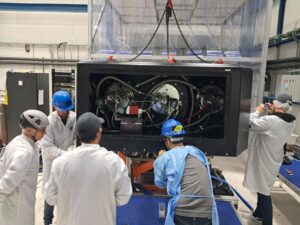
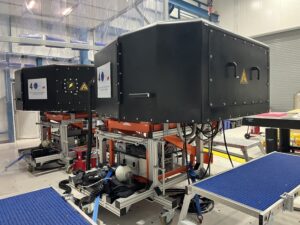


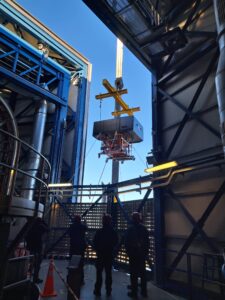


BlueMUSE est un spectrographe intégral de champ panoramique, optimisé pour le bleu, à résolution spectrale moyenne et limité par la qualité de la turbulence atmosphérique. Il sera installé sur l’un des télescopes du VLT (Very Large Telescope) situé au Cerro Paranal (ESO), au Chili.
Le projet constitue une évolution de la technologie utilisée pour l’instrument à grand succès VLT/MUSE, dont il reprend l’architecture et les innovations technologiques, tout en développant de nouveaux objectifs scientifiques rendus possibles par ses principales caractéristiques :
-
une plage de longueurs d’onde couvrant 350 à 580 nm,
-
une résolution spectrale moyenne de R = 4000,
-
un champ de vue supérieur à 1 arcmin².
BlueMUSE offrira de nouvelles opportunités scientifiques uniques dans de nombreux domaines de l’astrophysique, au-delà de ce que permet déjà MUSE.
Parmi ses principaux objectifs scientifiques :
-
l’étude de grands échantillons d’étoiles massives dans notre galaxie et dans le Groupe local,
-
l’analyse des nébuleuses ionisées, des galaxies d’étoiles et des galaxies à faible brillance de surface,
-
et, à haut décalage vers le rouge, la détection directe du milieu intergalactique (IGM) en émission pour la première fois, ainsi que l’étude de l’évolution du milieu circumgalactique (CGM) à l’époque du pic de la formation stellaire cosmique.
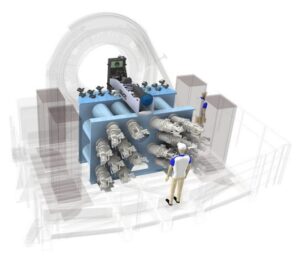
Les projets terminés
L’objectif premier du banc était d’installer un système d’optique adaptative sur le télescope solaire THEMIS de 90 cm de diamètre situé à l’Observatoire du Teide sur l’île de Ténérife. Une collaboration entre le Centre de Recherche Astrophysique de Lyon (CRAL) et l’équipe THEMIS du French-Spanish Laboratory for Astrophysics in Canarias (FSLAC), a permis la mise au point de ce dispositif d’optique adaptative pour l’observation de la surface du Soleil.
Parallèlement à la mise en marche de ce système, avec succès fin 2020, une collaboration pérenne avec l’équipe THEMIS du FSLAC, contribue au projet TAO de l’équipe AIRI, projet visant à développer des stratégies innovantes pour le contrôle temps réel, en permettant de les valider en conditions réelles.
L’instrument Multi Unit Spectroscopic Explorer (MUSE) est un instrument de deuxième génération du Very Large Telescope (VLT), installé en 2014 sur la plateforme Nasmyth de l’Unité de Télescope 4 (Yepun) de l’Observatoire Européen Austral (ESO) dans le désert du Paranal au Chili. Pour observer avec MUSE.
SNIFS est installé sur le University of Hawaii 2.2-meter telescope sur le Mauna Kea à Hawaii, États-Unis (Lantz et al., 2003, SPIE). Pour observer avec SNIFS.
Instrument visiteur sur le Télescope Canada-France-Hawaii sur le Mauna Kea à Hawaii, États-Unis puis sur le Télescope William Herschel à La Palma, Espagne. Pour observer avec OASIS.
1999 SAURON : Spectrographic Areal Unit for Research on Optical Nebulae (Instrument décommissionné )Spectrographe à intégral de champ, instrument visiteur qui fut installé sur le Télescope William Herschel à La Palma, Espagne (Bacon et al., 2001, MNRAS, 326, 23 « The SAURON Project. The panoramic integral-field spectrograph » et le site Web pour le projet scientifique associé). Sa structure est exposée temporairement au Musée des Confluences à Lyon du 16 juin 2017 au 2 septembre 2018 dans le cadre de l’exposition « Carnets de collections ».
